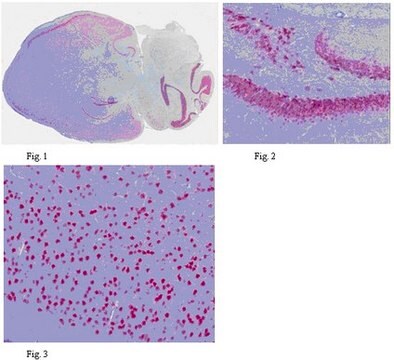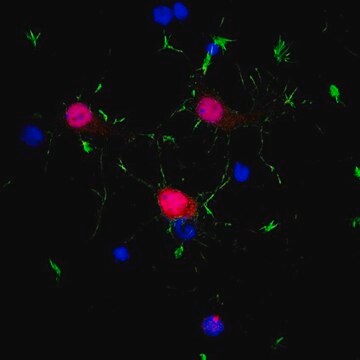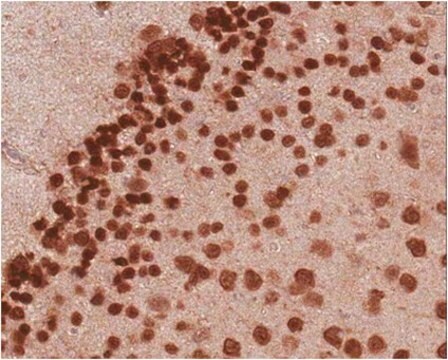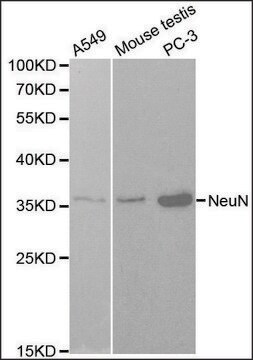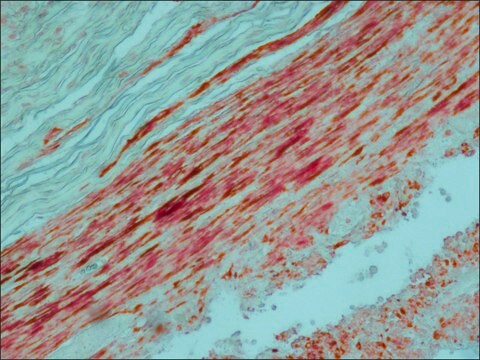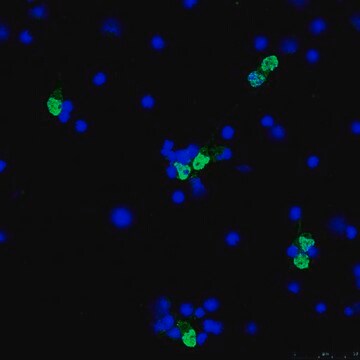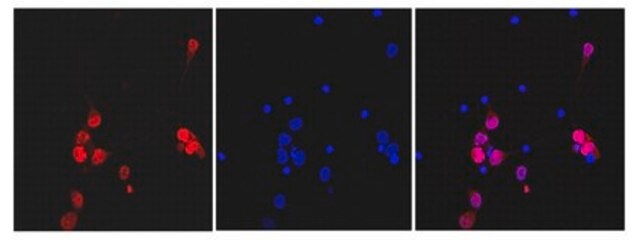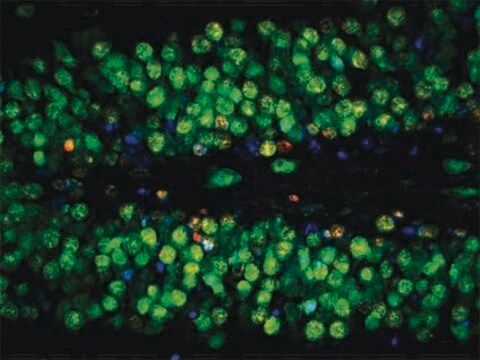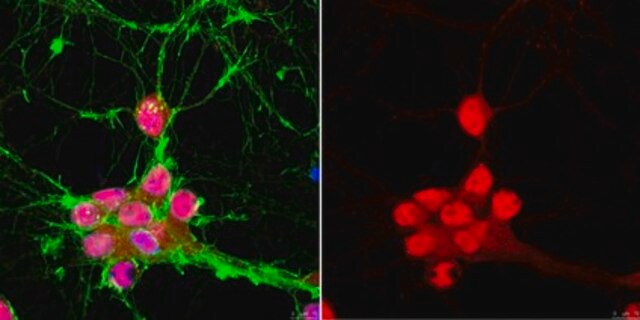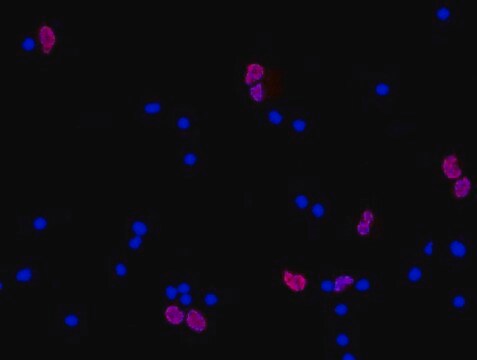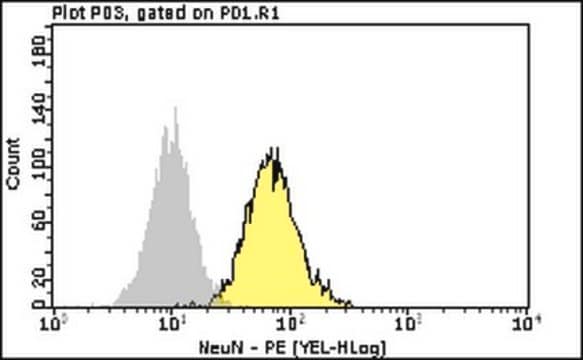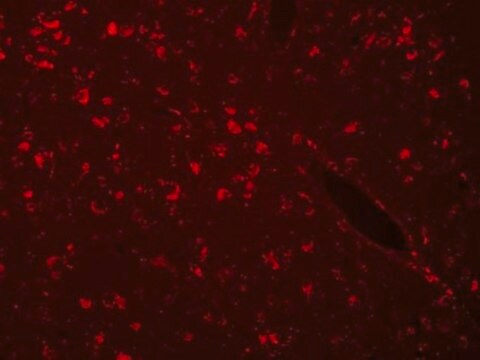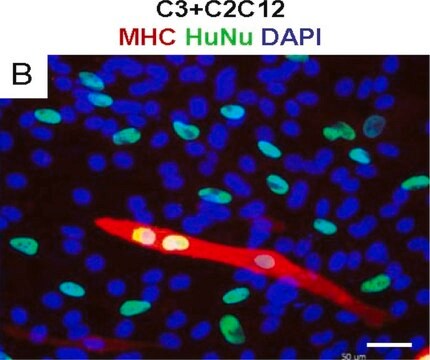ABN90
Anti-NeuN Antibody
serum, from guinea pig
About This Item
Produtos recomendados
fonte biológica
guinea pig
Nível de qualidade
forma do anticorpo
serum
tipo de produto de anticorpo
primary antibodies
clone
polyclonal
reatividade de espécies
rat, mouse
técnica(s)
immunocytochemistry: suitable
immunohistochemistry: suitable (paraffin)
western blot: suitable
Condições de expedição
wet ice
modificação pós-traducional do alvo
unmodified
Informações sobre genes
mouse ... Rbfox3(52897)
rat ... Rbfox3(287847)
Descrição geral
Aplicação
- Immunohistochemistry (Paraffin) Analysis: A 1:5,000 dilution from a representative lot detected NeuN in mouse cerebral cortex and hippocampus brain tissue sections.
- Immunocytochemistry Analysis: A 1:500 dilution from a representative lot detected NeuN in rat E18 cortical cells.
- Note: Actual optimal working dilutions must be determined by end user as specimens, and experimental conditions may vary with the end user.
Qualidade
Descrição-alvo
forma física
Não está encontrando o produto certo?
Experimente o nosso Ferramenta de seleção de produtos.
Código de classe de armazenamento
10 - Combustible liquids
Classe de risco de água (WGK)
WGK 1
Certificados de análise (COA)
Busque Certificados de análise (COA) digitando o Número do Lote do produto. Os números de lote e remessa podem ser encontrados no rótulo de um produto após a palavra “Lot” ou “Batch”.
Já possui este produto?
Encontre a documentação dos produtos que você adquiriu recentemente na biblioteca de documentos.
Os clientes também visualizaram
Nossa equipe de cientistas tem experiência em todas as áreas de pesquisa, incluindo Life Sciences, ciência de materiais, síntese química, cromatografia, química analítica e muitas outras.
Entre em contato com a assistência técnica